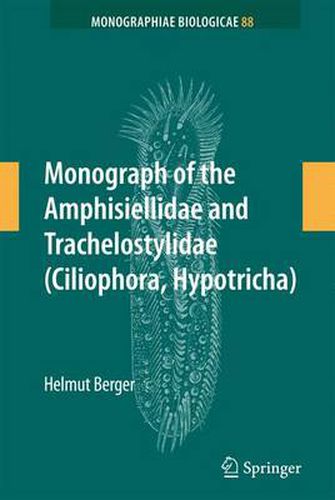Readings Newsletter
Become a Readings Member to make your shopping experience even easier.
Sign in or sign up for free!
You’re not far away from qualifying for FREE standard shipping within Australia
You’ve qualified for FREE standard shipping within Australia
The cart is loading…






This title is printed to order. This book may have been self-published. If so, we cannot guarantee the quality of the content. In the main most books will have gone through the editing process however some may not. We therefore suggest that you be aware of this before ordering this book. If in doubt check either the author or publisher’s details as we are unable to accept any returns unless they are faulty. Please contact us if you have any questions.
The present book is a monograph about two groups of hypotrichous ciliates, namely the Amphisiellidae and the Trachelostylidae. It is the third of six volumes which - view the Hypotricha, one of the three major taxa of the spirotrichs. The first volume is about the Oxytrichidae, a rather large group, many species of which have 18 highly characteristically arranged frontal-ventral-transverse cirri and, much more importantly, a comparatively complex dorsal ciliature due to (oxytrichid) fragmen- tion of dorsal kineties during cell division (Berger 1999). The second volume deals with the Urostyloidea, which are characterised by a zigzag-arrangement of the ventral cirri (Berger 2006). Although this pattern is often very impressive, it is a relatively simple feature originating by a more or less distinct increase of the number of frontal-ventral-transverse cirri anlagen. These anlagen produce cirral pairs which are serially arranged in non-dividing specimens. Some - ers are likely astonished that the monograph on urostyloids does not include Urol- tus, a group of tailed species, which also have a distinct zigzagging cirral pattern. However, morphological and molecular data indicate that the zigzag pattern of U- leptus evolved independently, that is, convergently to that of the urostyloids. Thus, Uroleptus was excluded from the urostyloid review. A zigzag pattern is also known from some oxytrichids, for example, Neokeronopsis, Territricha, Pattersoniella, showing that this pattern evolved several times independently (Berger 1999, 2006, Foissner et al. 2004).
$9.00 standard shipping within Australia
FREE standard shipping within Australia for orders over $100.00
Express & International shipping calculated at checkout
This title is printed to order. This book may have been self-published. If so, we cannot guarantee the quality of the content. In the main most books will have gone through the editing process however some may not. We therefore suggest that you be aware of this before ordering this book. If in doubt check either the author or publisher’s details as we are unable to accept any returns unless they are faulty. Please contact us if you have any questions.
The present book is a monograph about two groups of hypotrichous ciliates, namely the Amphisiellidae and the Trachelostylidae. It is the third of six volumes which - view the Hypotricha, one of the three major taxa of the spirotrichs. The first volume is about the Oxytrichidae, a rather large group, many species of which have 18 highly characteristically arranged frontal-ventral-transverse cirri and, much more importantly, a comparatively complex dorsal ciliature due to (oxytrichid) fragmen- tion of dorsal kineties during cell division (Berger 1999). The second volume deals with the Urostyloidea, which are characterised by a zigzag-arrangement of the ventral cirri (Berger 2006). Although this pattern is often very impressive, it is a relatively simple feature originating by a more or less distinct increase of the number of frontal-ventral-transverse cirri anlagen. These anlagen produce cirral pairs which are serially arranged in non-dividing specimens. Some - ers are likely astonished that the monograph on urostyloids does not include Urol- tus, a group of tailed species, which also have a distinct zigzagging cirral pattern. However, morphological and molecular data indicate that the zigzag pattern of U- leptus evolved independently, that is, convergently to that of the urostyloids. Thus, Uroleptus was excluded from the urostyloid review. A zigzag pattern is also known from some oxytrichids, for example, Neokeronopsis, Territricha, Pattersoniella, showing that this pattern evolved several times independently (Berger 1999, 2006, Foissner et al. 2004).